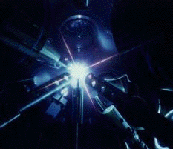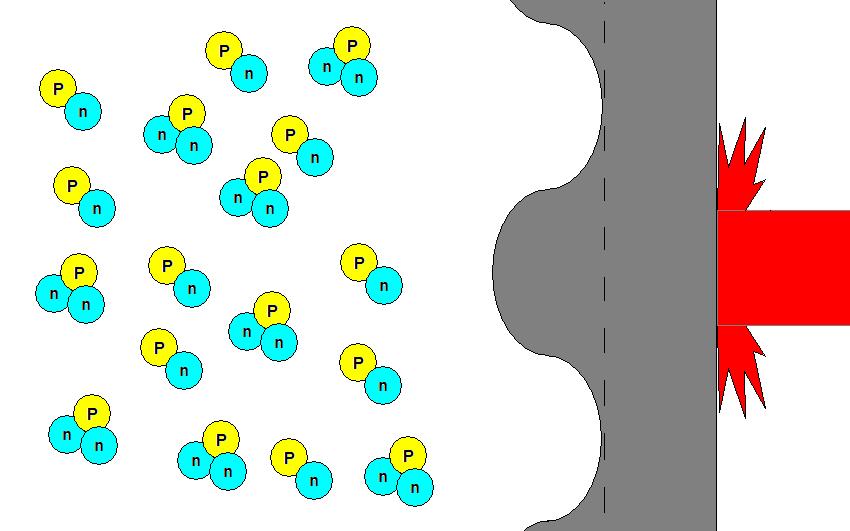Applications
INERTIAL CONFINEMENT NUCLEAR
FUSION
Nuclear fusion is the process of
fusing atoms and gaining large amounts of energy through the process.
For instance, by combining a deuterium ion and a tritium ion,
the output is a helium atom and a free electron. However, the
helium atom and free electron have less mass than the ions. Where
does this mass go? From Einstein, we learned that E=mc2, in other
words, the energy in a certain amount of mass is proportional
to the speed of light squared. If we know anything about the speed
of light, we know it's BIG. Therefore, even a little bit of mass
can create a large amount of energy. This is the interest in nuclear
fusion, but how do we make it happen?
 One way is through a process known as inertial confinement. Imagine
a small spherical shell filled with a mixture of these deuterium
and tritium ions. Now, if lasers were fired onto this shell from
every angle, the shell would be heated and compressed thus exciting
the ions on the inside. Through this excitation, the ions eventually
collide and fuse, thus achieving nuclear fusion. Ever seen Spider
Man 2? It's kind of like that.
One way is through a process known as inertial confinement. Imagine
a small spherical shell filled with a mixture of these deuterium
and tritium ions. Now, if lasers were fired onto this shell from
every angle, the shell would be heated and compressed thus exciting
the ions on the inside. Through this excitation, the ions eventually
collide and fuse, thus achieving nuclear fusion. Ever seen Spider
Man 2? It's kind of like that.

So where does Rayleigh-Taylor flow
fit in the process? Well, when the lasers hit the shell wall,
the wall tends to melt into the ionic mixture. The wall, typically
aluminum or some other metal, is a heavy fluid and the ionic mixture
is a light fluid. The heat from the laser acts as the forcing
parameter and Rayleigh-Taylor flow occurs. Unfortunately, as the
fluids mix, the ignition temperature required increases dramatically.
Since we're already on the order of millions of degrees Fahrenheit,
anything more is extremely difficult. This is the direct application
of our project. If we can find the function which controls the
rate of mixing of Rayleigh-Taylor flow, scientists would know
how to control the intensity of the lasers so that they minimize
the amount of mixing that occurs.
SUPERNOVAS
As a star dies, its gravity increases because it is pulling
in all nearby matter. Once the extremely dense bomb explodes,
it thrusts the heavy matter into the light dusty particles remaining
in its solar system. By understanding the visualization of Rayleigh-Taylor
flow, astronomers on Earth can witness the aftermath of a supernova
and provide more explanation to the understanding of the Universe.
WEATHER PATTERNS
If a heavy gust of wind were to travel over a cliff, it would
be interrupted by a light gust of wind coming up the cliff. This
light-into-heavy fluid mixture (in this case cold, heavy air and
warm, light air) is a good example of Rayleigh-Taylor flow. As
the fluids mix and traverse beyond the cliff, they can create
storms, dust clouds, and even hurricanes.
GEOPHYSICAL
Just before a volcano erupts, the magma is layered below the
surface of the Earth waiting to explode. However, geologists who
explore the layering of lava after an eruption have difficulty
in explaining why they are layered as such. One potential reason
is Rayleigh-Taylor flow occurring below the Earth's surface with
different densities of magma.
Essentially, any type of explosions or rapidly accelerating system
will involve Rayleigh-Taylor flow.